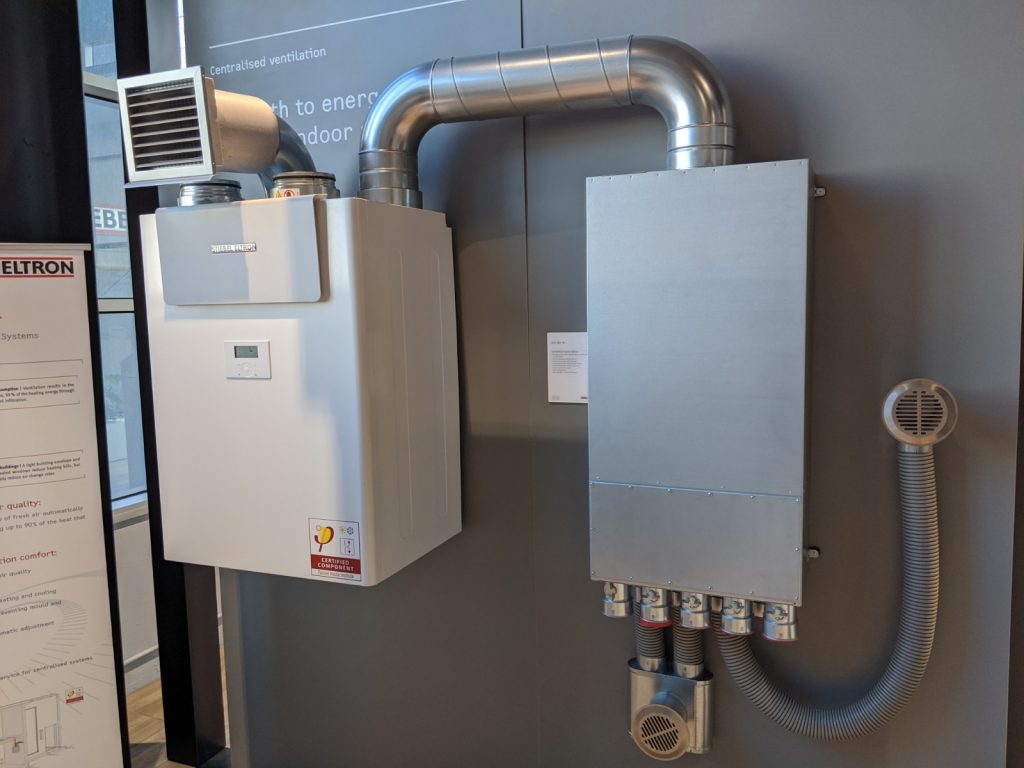The Role of HRV in Green Homes
Wiki Article
Discovering the Benefits of Heat Recovery Ventilation for Energy Effectiveness in Residences
Heat Recovery Ventilation (HRV) systems supply homeowners a functional approach to enhancing energy efficiency. By reclaiming heat from outgoing air, these systems can significantly lower heating & cooling costs. Additionally, they offer a stable supply of fresh air, boosting interior air high quality and comfort levels. As property owners think about sustainable options, understanding the nuances of HRV systems comes to be increasingly important. What aspects should one examine before making such an investment?Recognizing Heat Recovery Ventilation Equipments

Exactly How HRV Boosts Indoor Air Top Quality

Power Financial Savings: The Economic Advantages of HRV
Optimizing power performance, heat recovery ventilation (HRV) systems use significant monetary benefits for house HRV Heat Recovery Ventilation owners. By recuperating and reusing heat from exhaust air, HRVs noticeably minimize cooling and heating costs. This technology can result in power financial savings of approximately 30%, depending upon environment and usage patterns. Property owners typically discover reduced energy bills quickly after setup, making HRVs a financially wise financial investment with time. Furthermore, several areas offer incentives or discounts for energy-efficient upgrades, even more boosting the financial appeal. As power costs remain to increase, the cost-effectiveness of HRVs becomes significantly clear. Generally, the incorporation of HRV systems not just promotes energy effectiveness but likewise adds to long-term financial cost savings for homes.The Ecological Impact of Heat Recovery Ventilation
A significant environmental benefit of heat recovery ventilation (HRV) systems exists in their capacity to reduce overall energy usage. By reclaiming warm from exhaust air and moving it to inbound fresh air, HRV systems minimize the need for energy-intensive heating and cooling techniques. This decrease in energy demand adds to reduce greenhouse gas discharges, as less nonrenewable fuel source is required to maintain comfortable indoor temperatures. Furthermore, HRV systems improve indoor air quality by efficiently exchanging stale air with fresh outdoor air, reducing reliance on mechanical air conditioning systems that can hurt the atmosphere. Generally, the application of HRV systems supports sustainable living practices and aligns with worldwide initiatives to battle environment adjustment by promoting energy efficiency in domestic settings.
Choosing the Right HRV System for Your Home
How can homeowners assure they pick the ideal heat recovery ventilation (HRV) system for their requirements? They must assess their home's dimension and design, as these factors affect air flow demands. Next off, assessing the system's effectiveness ratings is essential, as higher ratings show far better performance and power savings. Homeowners should likewise think about setup and maintenance expenses, contrasting different brand names and models for worth. Additionally, it is necessary to review sound degrees, as some systems operate even more quietly than others. Consulting with a/c professionals can give tailored referrals based on certain home problems. Taking a look at user evaluations and service warranties can aid in making an informed decision, ensuring that the chosen HRV system effectively enhances indoor air quality and power effectiveness.Often Asked Questions

Just how Frequently Should I Tidy or Preserve My HRV System?
The regularity of cleansing or keeping a heat recovery ventilation (HRV) system usually relies on use and environmental elements. Typically, it is a good idea to do upkeep every 6 months to assure peak performance and air high quality.
Can HRV Solutions Help In Reducing Humidity Levels Indoors?
HRV systems can efficiently reduce indoor humidity degrees by trading stagnant, damp air with fresh, drier air from outside. HRV Heat Recovery Ventilation. This process aids keep a well balanced interior atmosphere, improving comfort and stopping moisture-related issues
What Is the Life-span of a Regular HRV System?
The life-span of a regular heat recovery ventilation (HRV) system differs, normally lasting between 10 to 15 years. Regular upkeep can extend its efficiency and functional life, making certain peak efficiency throughout its use period.Exist Any Type Of Noise Worry About HRV Equipments?
Noise interest in HRV systems can arise, particularly from follower operation. Nevertheless, many modern-day devices are made to decrease sound degrees, ensuring they run quietly while keeping effectiveness, which deals with potential disturbances in living settings.Can I Install an HRV System Myself, or Do I Required a Specialist?
The private contemplated whether to mount the heat recovery ventilation (HRV) system personally or work with a professional. Typically, while do it yourself installation is possible, knowledge warranties proper performance and conformity with neighborhood building codes, improving system performance.Report this wiki page